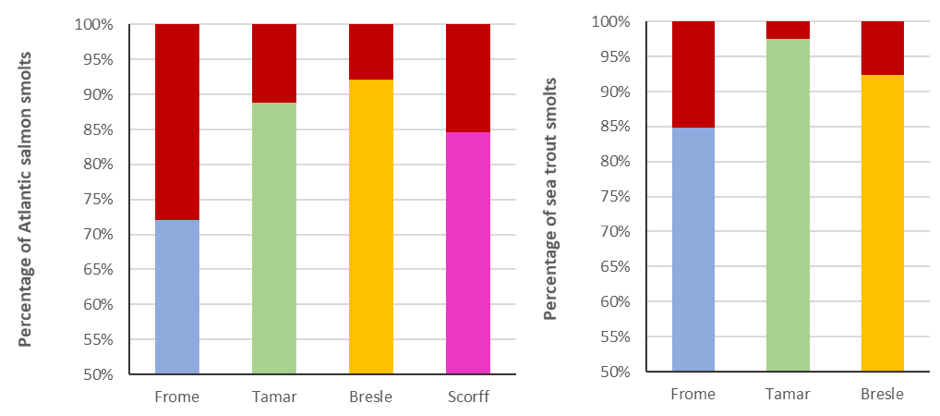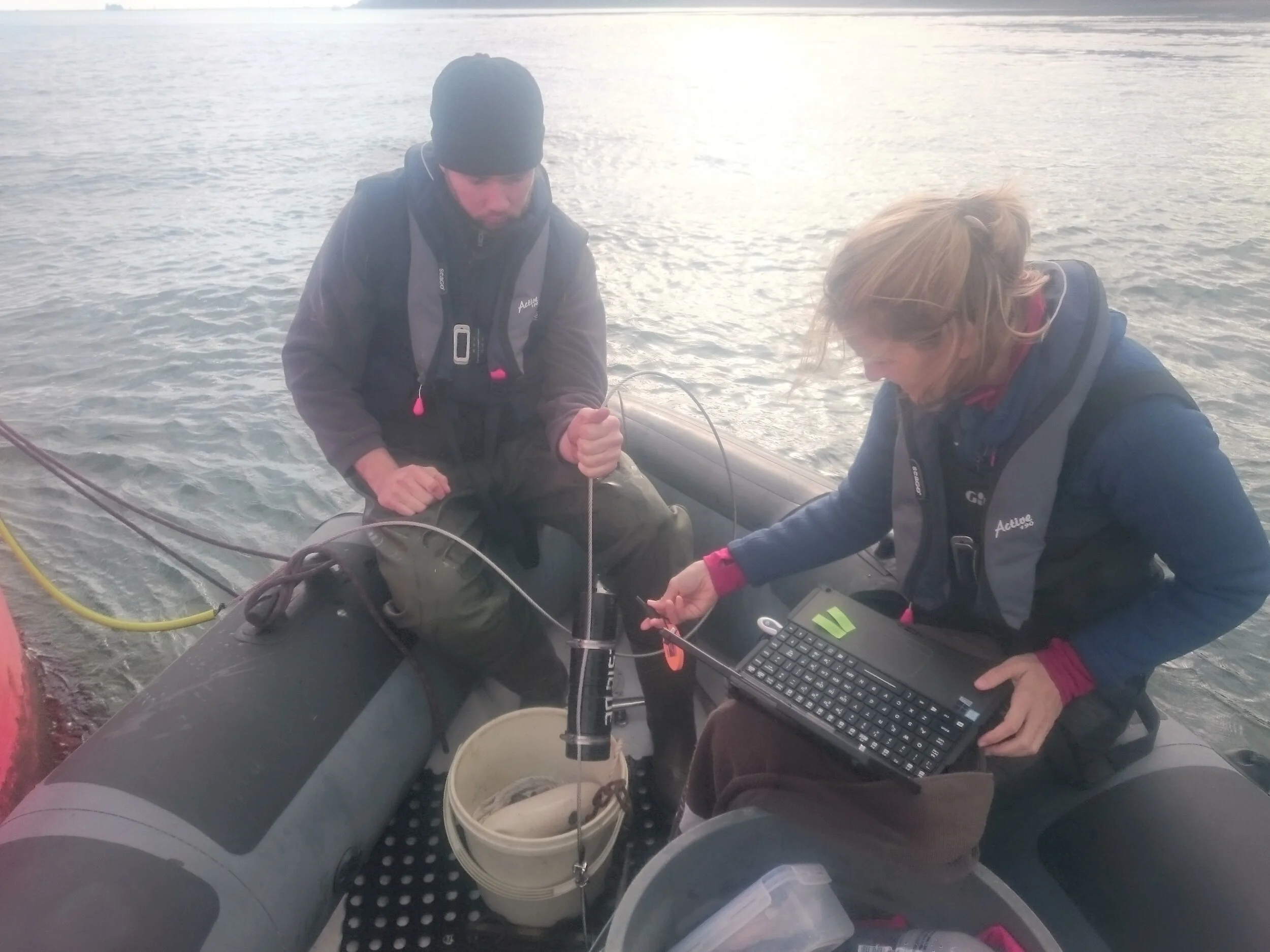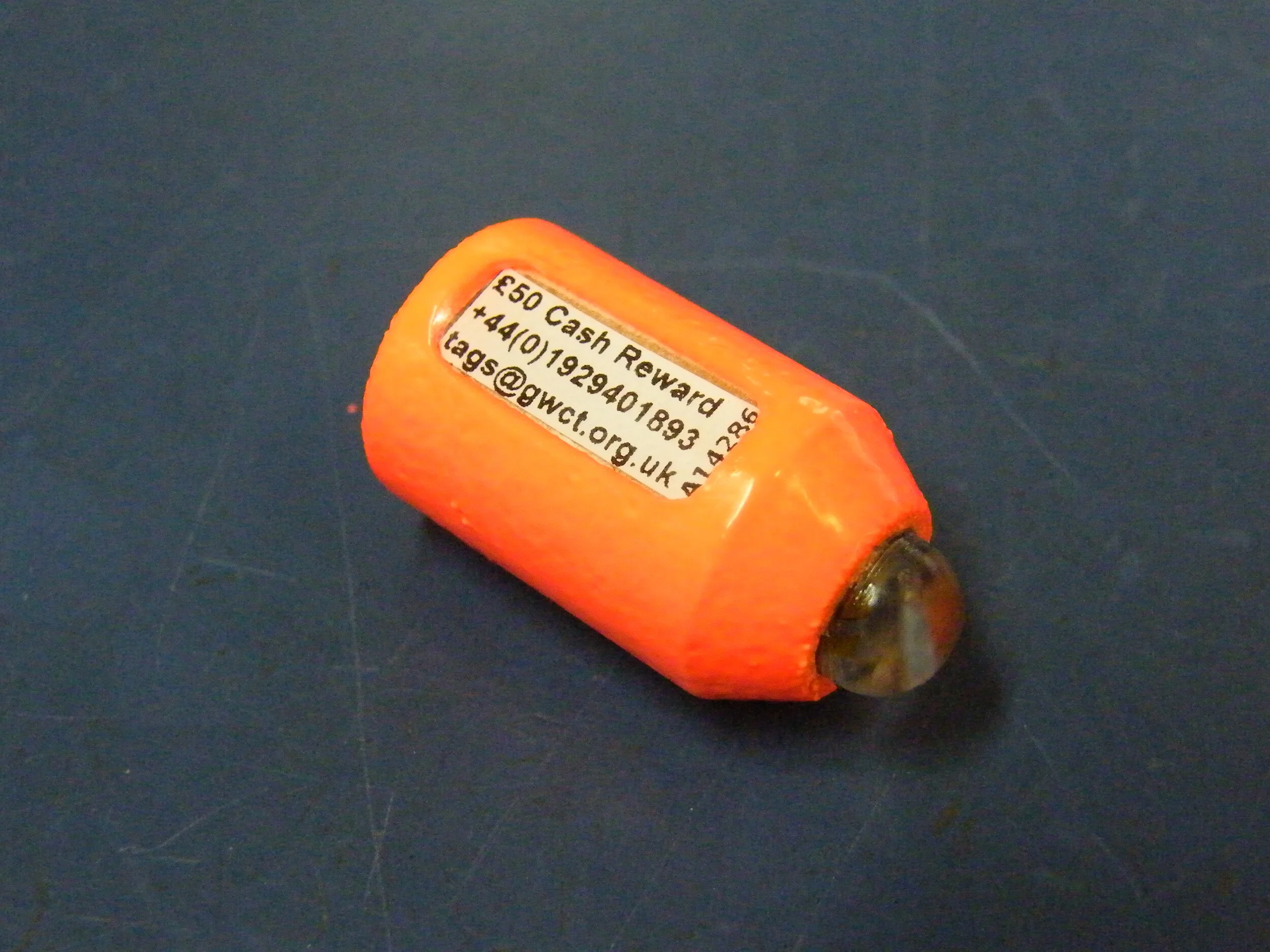
SAMARCH
The SAlmonid MAnagement Round the CHannel Project
SAMARCH (2017 – 2023) is a seven-year project that will deliver practical tools for management to better protect salmon and sea trout in coastal waters. SAMARCH has 10 partners, five from England and five from France and is led by the Missing Salmon Alliance (MSA) Partner, The Game and Wildlife Conservation Trust (GWCT) and has a budget of £9m which is funded 69% by the European Union’s Interreg France England Channel Programme. www.samarch.org.uk
Why do we need this work?
SAMARCH is working on five rivers flowing into the English Channel, which is one of the most heavily developed and commercially fished areas of our oceans targeting, bass, mackerel, herring, and mullet especially with gill nets. Each day hundreds of thousands of meters of nets are laid which if set in the wrong place and at the wrong time of year risk catching and killing salmon and sea trout. The Channel’s waters are used as a migration route for juvenile and adult salmon to the 80 or so rivers there. It is also a key habitat for sea trout to feed and grow before returning to their rivers to feed. To better protect these fish, we need to gather evidence of ho0w they use the channel’s waters, its estuaries and when.
SAMARCH Tracking Work
Salmon and sea trout smolts
SAMARCH has tracked 860 salmon and sea trout smolts through four estuaries, the Frome and Tamar in the South of England and the Bresle and Scorff in Northern France. This is to estimate their mortality rates through the lower river and estuarine phase of their migration. Smolts are captured for tagging using a fish trap as they migrate downstream
A large Frome sea trout smolt caught for tagging in March 2018
The small tags we use
Preliminary Results
The graphs show the average (2018 & 2019) number smolts detected from the lower river release site and the mouth of the estuary. As you can see there was some variation between rivers with the Tamar smolts performing the best but Frome smolts the worse.
The GWCT SAMARCH team deploying and testing acoustic tag receivers in the Tamar Estuary.
Dr Celine Artero who leads this work for GWCT, on the EA fish trap at Gunnislake on the Lower Tamar with one of her recaptured sea trout.
Sea trout kelts
SAMARCH has also tagged 300 adult sea trout from three of these rivers to ascertain where they go at sea, what habitats they use and how deep do they swim and what is killing them at sea, birds, mammals or commercial fishing nets.
The tags are inserted into the fishes body cavity, by making a 2.5cm incision while the fish is under sedation, it is then closed with two to three suiters. After a few minutes the recovered sea trout are released back to the river to continue its post spawning migration back to sea and around the Channel.
The acoustic tag will tell us if and when the fish returns to the sea in late winter and when it returns to the river the following spring or summer. We then recapture the fish to recover the DST tag we can download the data to estimate where it has been at sea and at what depths it was swimming and when. We use traps and electric fishing to recapture our tagged fish and recover our DST tags
We recovered 23% of our deployed DST tags thus far, from both our recaptured sea trout in the river and from tags washed up on beaches as far afield as Belgium when the fish has died at sea.
GWCT electric fishing from a boat on a flooded River Tamar in November 2019 to catch sea trout kelts for tagging.
The DST tag is surrounded by a bright orange float labelled with contact details. If the fish dies at sea, the tag will float to the surface and can wash onto beaches. We have had a number of tags returned from beach walkers.
A Frome sea trout kelt in January 2020 to be tagged with a Data Storage Tag (DST) and acoustic tag.
Preliminary Results
Swimming and diving behaviour of a sea trout at sea - we are finding that sea trout spend much of their time at depth, particularly during the day and can dive to 50m.
Estimated locations of a Tamar sea trout at sea
Commercial fishing bylaws and salmon and salmon and sea trout conservation
Coastal commercial fishing bylaws to six nautical miles in England are implemented by the 10 regional Inshore Fisheries Conservation Authorities (IFCA’s). Currently to protect salmon and sea trout from capture in gill nets, the top of the net (Headline) must be set at least five meters below the surface and there are no netting areas, mainly in and near estuaries. It was assumed that sea trout spend their time at sea primarily near the surface.
Our results show that some sea trout spent much of their time below 10m and in areas where gill netting is permitted. Once finalised SAMARCH partners will be discussing these results with the IFCA’s.
















